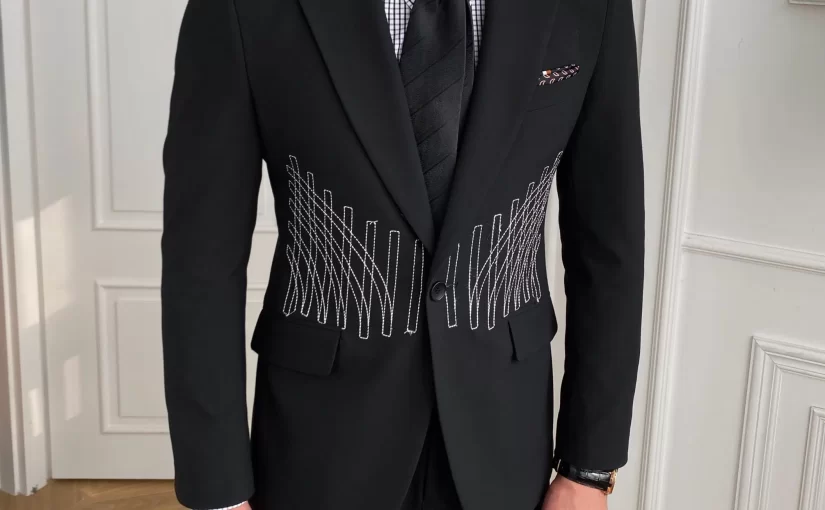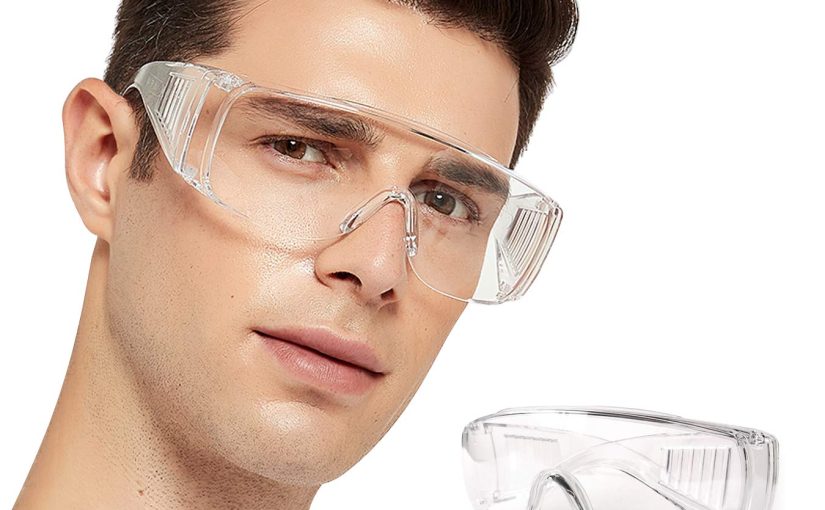Introduction to Suit Sizing
How to measure for suit jacket? Getting the right suit starts with correct sizing. It solidifies your style and ensures comfort.
Importance of Accurate Measurements
Accurate suit measurements are crucial for a professional look. They prevent inconsistencies and awkward fits. This knowledge saves time and enhances your appearance, boosting confidence. Thus, understanding how to measure for a suit jacket is essential for anyone looking to present their best self.
Key Measurements for a Suit Jacket
Chest Measurement
To measure the chest for a suit jacket, use a flexible measuring tape. Place the tape under your arms at the fullest part of your chest. Keeping the tape measure level and snug, but not tight, ensures an accurate measure. This is essential for selecting the right jacket size and ensuring a comfortable fit.
Shoulder Width
Shoulder width is a critical dimension for the proper fit of a suit jacket. Measure from one shoulder seam to the other across your back. Use a tape measure and make sure it lies flat and straight across the shoulder blades. This measurement helps tailor the jacket to align with your body’s structure.
Sleeve Length
For sleeve length, start the measuring tape at the shoulder seam. Run it along the arm to the wrist, where the sleeve should end. Sleeve measurements ensure the jacket covers the arm adequately but doesn’t extend past the wrists. Proper sleeve length can prevent an unkempt appearance and maintain the suit’s overall elegance.
Jacket Length
The jacket length determines how well a suit complements your body type. Measure from the base of the collar down to the point where you want the jacket to end, typically around the thumb knuckle. Proper jacket length is crucial for aesthetic balance and can vary based on style preferences.
These key measurements are pivotal for achieving a well-fitted suit. Taking measurements accurately ensures the suit looks tailored to your body, enhancing both style and comfort.
Tools and Techniques for Measuring
Choosing the correct tools and techniques is essential for accurate suit measurements. This section outlines the ideal practices for measuring a suit jacket effectively, ensuring that your measurements lead to a well-fitting suit.
Choosing the Right Measuring Tape
Select a flexible measuring tape for this task. It must be soft yet durable. Metal tapes are unsuitable as they cannot contour to the body properly. A cloth or fiberglass tape measure is ideal. Ensure it has clear markings for precise measurements.
Correct Posture for Measurement
Stand straight with your arms at your sides. Keep your feet shoulder-width apart. Do not puff your chest or suck in your stomach. This natural standing position helps in taking accurate measurements without altering the body’s stance. Ask someone to assist you to ensure the tape measure is horizontal and snug, but not tight.
Understanding Suit Fits
In the world of suits, comfort and style dictate the fit. Your choice significantly impacts your appearance, especially during formal occasions where a misfit suit might stand out awkwardly. Therefore, understanding the differences and specifications of various suit fits is essential.
Classic vs. Slim vs. Skinny Fits
Three primary suit fits cater to varying fashion senses and body types: Classic, Slim, and Skinny.
- Classic Fit offers a more traditional, comfortable silhouette with ample room for movement. It’s perfect for those who prefer a more conservative look or need extra space due to their body structure.
- Slim Fit is tighter than classic fit, contouring the body closely but allowing room for some movement. It suits individuals who desire a modern, fitted look without the restrictiveness of a skinny fit.
- Skinny Fit provides the most body-contoured fit, suitable for fashion-forward individuals who favor a trendier style. It is the most restrictive fit, offering minimal room for movement.
Adjusting Measurements Based on Fit Preference
When measuring for your suit, consider the fit style you choose:
- Classic Fit may require standard measurements without extra modifications since it’s designed to be roomier.
- Slim Fit ideally means you should reduce measurements slightly to ensure the suit hugs your form. However, never measure too tightly; allow at least half an inch for comfort.
- Skinny Fit usually requires precise measurements since any excess fabric can destroy the intended aesthetic. Ensure that the measurements snugly follow the body’s contours.
Each fit requires careful consideration of body type and personal comfort preferences. Choose wisely based on the look you aim to achieve and the occasion you are dressing for.
Common Sizing Challenges and Solutions
How to measure for suit jacket? Navigating suit sizing can be tough, especially when dealing with unusual body shapes or brand inconsistencies. Let’s tackle some common issues and their fixes.
How to Adjust for Atypical Body Types
Finding suits for unique body types may seem daunting. Here are some tailored adjustments:
- Athletic Builds: Look for suits with a relaxed drop in the jacket and fuller pants. Your muscular frame needs that extra room.
- Tall and Lean: Choose a longer jacket length ‘L’ size and slim-fit pants. Ensure they complement your height.
- Short and Broad: Opt for ‘S’ size jackets with a classic fit. This avoids an over-tight appearance.
- Uneven Proportions: Consider separates. Match different size pants and jackets for a custom fit. Tailoring can further refine the fit to your unique shape.
Dealing with Brand to Brand Size Differences
Navigating multiple brands? Sizing can be tricky. Here’s how to get a consistent fit:
- Understand Your Measurements: Know your measurements and compare them against each brand’s size chart.
- Try Before You Buy: If possible, try on suits from different brands to feel the fit.
- Use a Tailor: A tailor can adjust a close-fitting suit to your exact measurements. It’s worth the extra step.
- Read Reviews: Look for comments on fit and sizing from other customers with similar builds.
- Be Flexible: Be open to getting different sizes in different brands. Fit matters more than the number.
By approaching these sizing challenges with patience and a plan, you’ll find the perfect suit that flatters your unique shape and style.
Utilizing Technology for Precision
In the digital age, measuring for a suit jacket has advanced beyond traditional methods. This section explores how technology can refine the process, ensuring a precise fit every time.
Proprietary Sizing and Fit Techniques
Several brands offer proprietary technology to determine the perfect suit fit. These methods often involve algorithms that analyze your basic measurements against vast datasets. This approach predicts the suit size most likely to fit you accurately. This technology solves many sizing issues without requiring a physical tailor visit.
Participants simply input standard measurements, such as height and weight. The system uses this data, along with additional details like body shape or preferred fit style (classic, slim, or skinny). It then recommends the best size. This innovation reduces errors that can occur when individuals measure themselves.
Online Tools and Applications
Various online tools and apps also simplify the suit measuring process. From mobile apps that scan your body to web-based applications, technology makes it easy. Users input their measurements or let the app guide them through the measuring process. They immediately receive size recommendations. These tools often provide visual tutorials. This ensures measurements are taken correctly.
Moreover, such innovations allow for adjustments. Users can tweak measurements based on previous orders or changes in body size. This adaptability ensures the suit fits perfectly, even if your body changes slightly over time.
Utilizing these technological tools and proprietary techniques, anyone can achieve a tailor-made suit fit without visiting a tailor. Embracing such advancements ensures a stylish, well-fitted suit for any occasion.
Final Tips on Measuring for a Suit Jacket
Ensuring Consistency
Measuring for a suit jacket needs consistency. Make sure you follow the same steps every time. Use the same tape measure for all measurements. Always measure in the same posture and wear similar clothes. This helps avoid changes in measurements taken at different times.
Have someone help you take measurements. It can be hard to measure yourself accurately. With a helper, you’re more likely to get a steady and consistent measure. Also, check your measurements twice to catch any mistakes.
Make a note of your measurements. Keep them for future reference. This makes it easier to compare and update as needed. If you shop for suits often, having your measurements handy can save time.
When to Seek Professional Help
How to measure for suit jacket? Sometimes it’s best to get a professional’s touch. If you’re unsure about your measurements, see a tailor. A tailor can measure you precisely. They can also suggest the correct suit style and fit for your body.
If you have an important event, like a wedding or a job interview, getting measured by a tailor is a good idea. They ensure your suit fits perfectly for the special day.
When buying a high-quality suit, investing in a tailor’s measurement ensures the best fit. It also helps avoid costly adjustments later.
Remember, a well-fitting suit can make a great impression. It’s worth the effort to measure right or get help from a pro.









